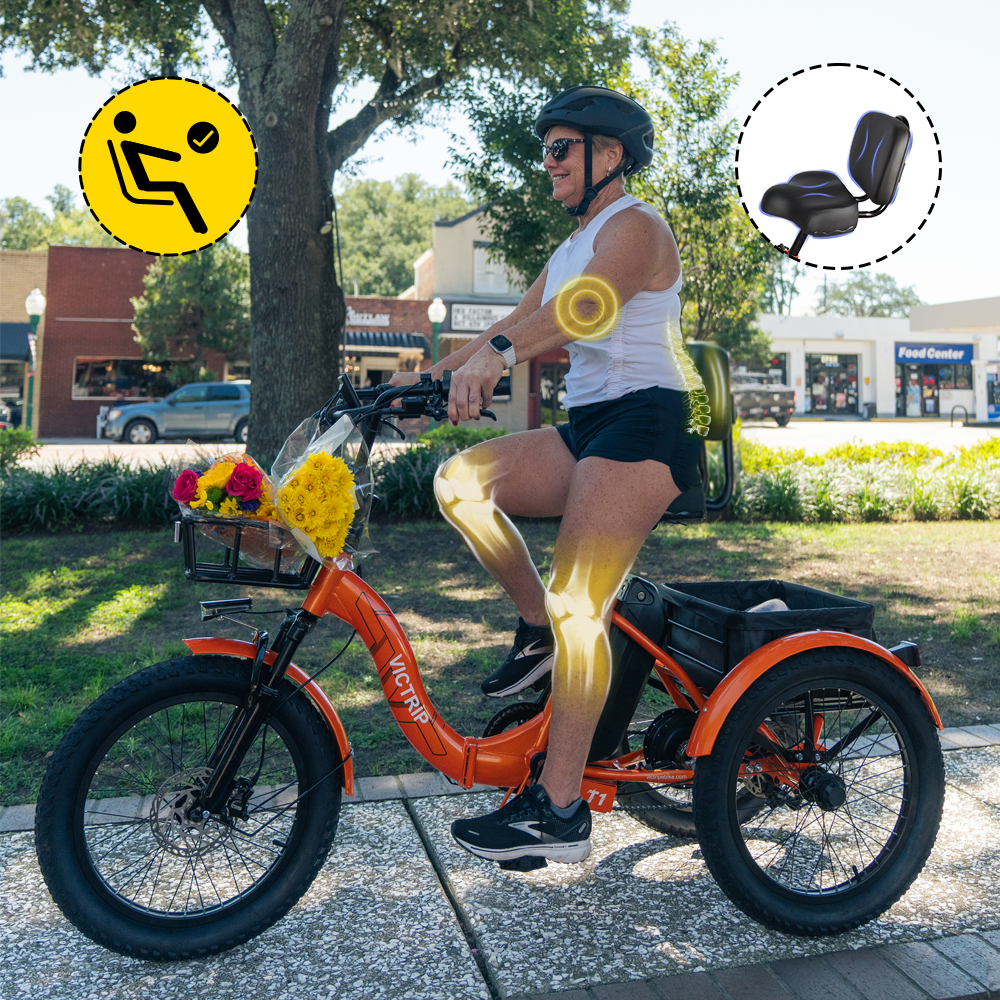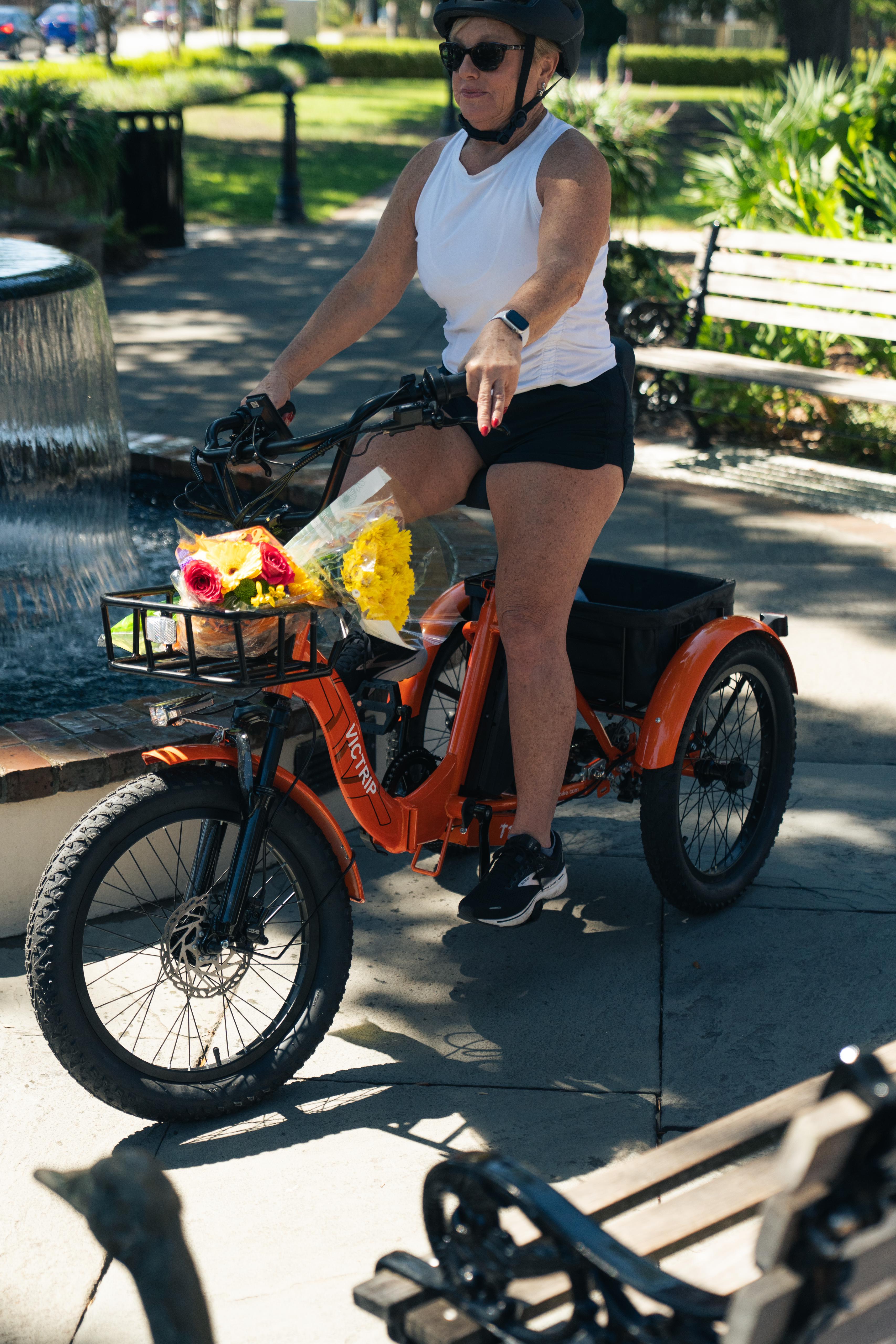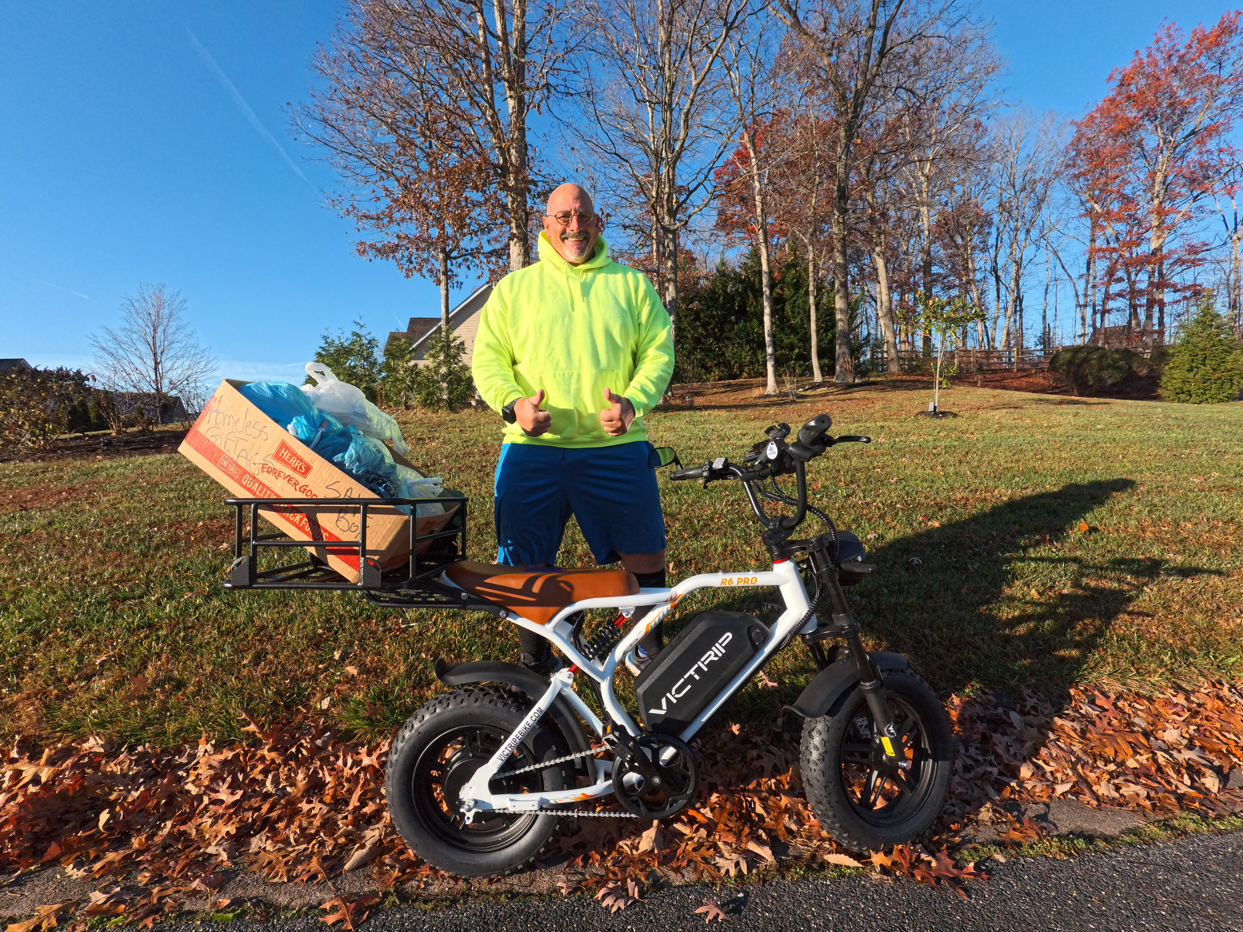
What Determines eBike Battery Lifespan?
Electric bikes have revolutionized modern commuting, and their batteries are at the heart of the movement. The better the battery, the longer the ride—and the longer it lasts. Factors that affect eBike battery longevity include:
-
Battery chemistry
-
Charge cycles
-
Charging behavior
-
Temperature
-
Storage
-
Brand and build quality
1. Battery Chemistry (Lithium-ion vs Lead-acid)
Most eBikes today use lithium-ion (Li-ion) batteries due to their superior energy density and recharge efficiency compared to outdated lead-acid models.
| Battery Type | Lifespan (Cycles) | Typical Range | Pros | Cons |
|---|---|---|---|---|
| Lithium-ion (Li-ion) | 500–1200+ | 30–70 miles | Lightweight, fast-charging, longer life | Higher upfront cost |
| Lead-acid | 300–500 | 10–20 miles | Cheap, accessible | Heavier, shorter lifespan |
🔋 VICTRIP eBikes use high-capacity LG lithium-ion cells, a gold standard in durability and consistent performance.
2. Charge Cycles Explained
A charge cycle is one full discharge and recharge of a battery. So if you drain your battery to 50% one day, then recharge it fully, that’s half a cycle.
Most lithium-ion eBike batteries are rated for 500 to 1000 full charge cycles, which equates to 3 to 5 years of use with proper care.
3. Usage Patterns and Riding Habits
How you ride directly influences battery life:
-
Frequent acceleration, off-road, and steep inclines = faster drain
-
Eco-mode riding, smooth terrain = extended life
-
Overloading with cargo or riding in extreme weather = degrades cells
🚴 VICTRIP eBikes include intelligent power management, which helps optimize output based on your riding style, preventing unnecessary battery stress.
Average Lifespan: How Many Years Do eBike Batteries Last?
Real-World vs Manufacturer Specs
Manufacturers often advertise battery lifespans of 1000 cycles, but real-world performance may fall slightly short, especially without ideal charging and storage practices.
| Rider Type | Expected Years | Estimated Miles |
|---|---|---|
| Daily Commuter | 3–4 | 10,000–15,000 mi |
| Moderate Rider | 5–6 | 7,000–12,000 mi |
| Light Rider | 6–7 | 4,000–9,000 mi |
Climate and Environmental Impact
Batteries are sensitive to temperature extremes:
-
❄ Cold: Reduces capacity temporarily
-
🔥 Heat: Permanently shortens lifespan
Signs Your eBike Battery is Dying
If you’re experiencing any of the following, your battery may be nearing the end:
-
Significant drop in range
-
Takes longer to charge
-
Overheats or doesn’t charge at all
-
Sudden power cuts
-
Rapid drops from 100% to 0%
Top Tips to Extend Your eBike Battery Life
Storage Best Practices
-
Store indoors between 50–77°F (10–25°C)
-
Keep battery at 50–70% charge during long storage
-
Avoid freezing temperatures
Charging Do’s and Don’ts
DO:
-
Use only the original charger
-
Let battery cool before charging
-
Charge when battery reaches 20–30%, not 0%
DON’T:
-
Overcharge (unplug at 100%)
-
Leave plugged in for days
-
Charge immediately after riding in hot weather
The VICTRIP battery system integrates overcharge, overheat, and deep-discharge protection, dramatically reducing common causes of early battery failure.
Myths About eBike Battery Life – Busted!
❌ Myth 1: Draining to 0% Improves Life
Truth: Draining completely stresses lithium cells. Partial cycles are healthier.
❌ Myth 2: Charge After Every Ride
Truth: Only charge when needed—charging too often can generate excess heat.
❌ Myth 3: More Voltage = Longer Life
Truth: More voltage increases torque/speed, not battery life. It’s the watt-hour capacity and cell quality that count. VICTRIP balances 48V systems with large-capacity LG cells, optimizing both power and lifespan.
Comparing Battery Lifespan by Voltage: 36V vs 48V vs 52V
| Voltage | Typical Use Case | Longevity Impact |
|---|---|---|
| 36V | Urban, entry-level | Moderate |
| 48V | Mid-range, mixed terrain | High |
| 52V | High-performance | Slightly higher strain |
How to Calculate Watt-Hours and Why It Matters
Watt-hours (Wh) = Voltage × Amp-hours (Ah)
Higher Wh = Longer Range
Example:
-
48V × 15Ah = 720Wh
-
52V × 20Ah = 1040Wh
-
VICTRIP high-capacity LG battery: 48V × 20Ah = 960Wh, giving riders up to 75 miles per charge, depending on terrain and mode.
When Should You Replace an eBike Battery?
-
Drops to less than 50% range
-
Takes too long to charge
-
You’ve surpassed 800–1000 cycles
-
The battery is 5+ years old
-
It shows physical swelling or overheating
💡 With VICTRIP LG batteries, most users report 4–6+ years before needing replacement.
Conclusion: Get the Most Miles Out of Every Charge
Your eBike battery is the powerhouse behind your rides. With smart charging habits, proper storage, and an understanding of the factors that affect longevity, you can squeeze every last mile out of your battery.
From choosing the right chemistry to recognizing the signs of battery wear, taking care of your eBike battery is an investment in both safety and performance.
FAQs
Why does VICTRIP use LG cells in their batteries?
LG cells are globally recognized for stability, longevity, and high energy density—ensuring superior performance and safety.
How can I tell if my battery is lithium-ion?
Most modern eBikes use lithium-ion. Check the label or manual for specs.
Should I always charge to 100%?
No. Charging to 80–90% is healthier for battery longevity unless you need full range.
Can I use third-party batteries?
Yes, but only from trusted sources. Mismatched or cheap third-party batteries can damage your eBike.
Is it safe to ride in rain with my battery?
Most eBike batteries are water-resistant but not waterproof. Avoid submersion or heavy rain exposure.




Share:
Fat Tire E-Bikes Vs. Thin-Tire E-Bikes: Choosing the Right Ride
Foldable Electric Bike: Are They Worth It?